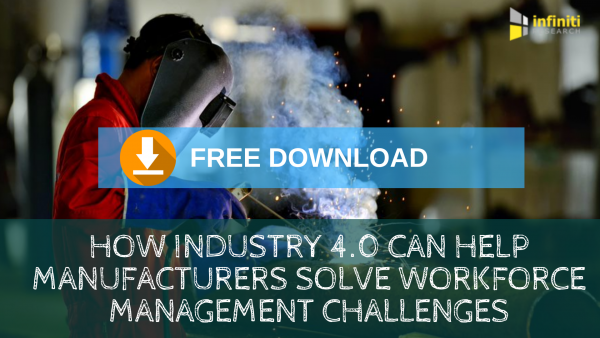The manufacturing industry in the U.S. has made impressive strides in the past couple of years. The country has witnessed a rise in public awareness about the modern manufacturing industry, an increase in jobs returning to the country, and also the advent of new technologies that are driving the industry forward. However, the ongoing struggle to find skilled labor due to the rapid retirement of baby boomers from the sector is proving to be a major workforce management challenge for companies in the manufacturing sector. Apart from this, there are several other challenges that manufacturing companies must tackle in order to sustain the future scalability of the sector.
Stay updated on our latest market intelligence solutions for the manufacturing industry. Request a free brochure to learn more.
Top workforce management challenges
Hiring the right workforce
Manufacturing operations today are largely different from what it was a decade ago. The advent of digital technologies including robotics and advanced enterprise software are paving way for a new manufacturing environment. The modern workforce must have the skills and expertise to handle the digital systems which have become a part and parcel of the manufacturing sector. Fewer schools offer shop classes and more students shy away from manufacturing, posing as a workforce management challenge for manufacturers to find the right talent.
Are you a manufacturer facing similar challenges? Request a free proposal to know how we can help you overcome them.
Consistent training and education
With rapid changes taking place in the manufacturing industry, even well-trained employees may face difficulties in keeping pace with these disruptions. Another key workforce management challenge for companies in the manufacturing sector is to ensure consistent training and education that would ensure that employees are up-to-date with the new tech trends and other market changes.
Overcoming stigmas related to manufacturing jobs
Throughout the United States, manufacturing has fallen out of style. High Schools, teachers and parents alike are steering children away from a career in the industry. This sector is currently bogged down by outdated stigmas such as being a dark, dangerous, and ominous industry creating serious workforce management challenges for this sector.
Cybersecurity threats
Technology continues to change how manufacturers develop products and interact with customers. As a result, information technology security risks have increased. Despite this, several manufacturers fail to take the necessary steps to protect their data. The number of connected products in manufacturing operations is on the rise, consequently, external and internal vulnerabilities are also increasing in the industry.
How can Industry 4.0 help manufacturers overcome workforce management challenges? Download this free resource to find out:
Get in touch to learn more about our solutions for better workforce management.


